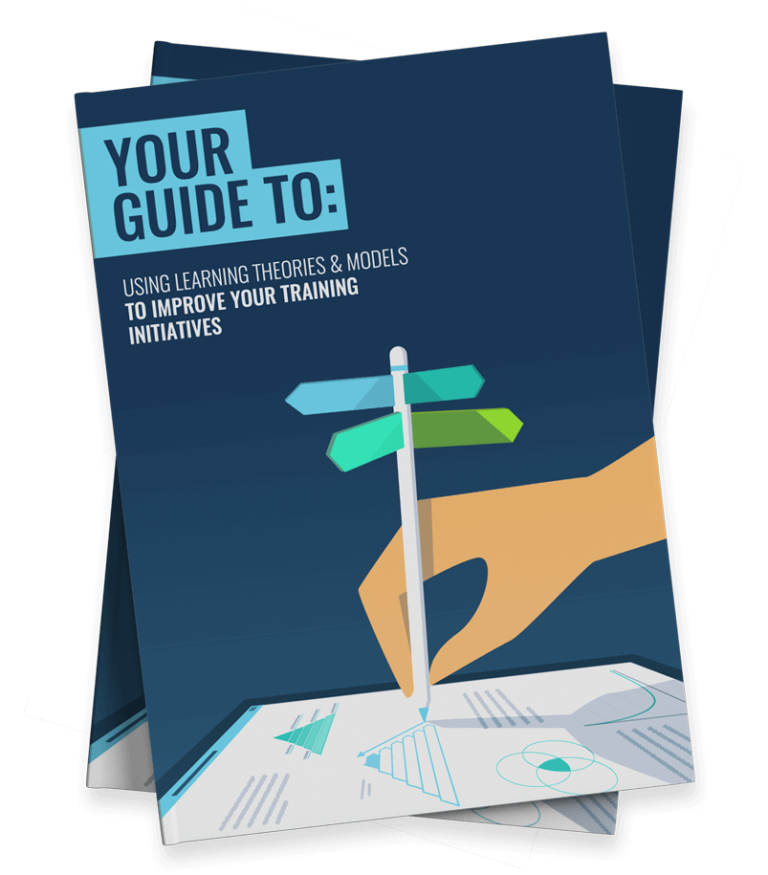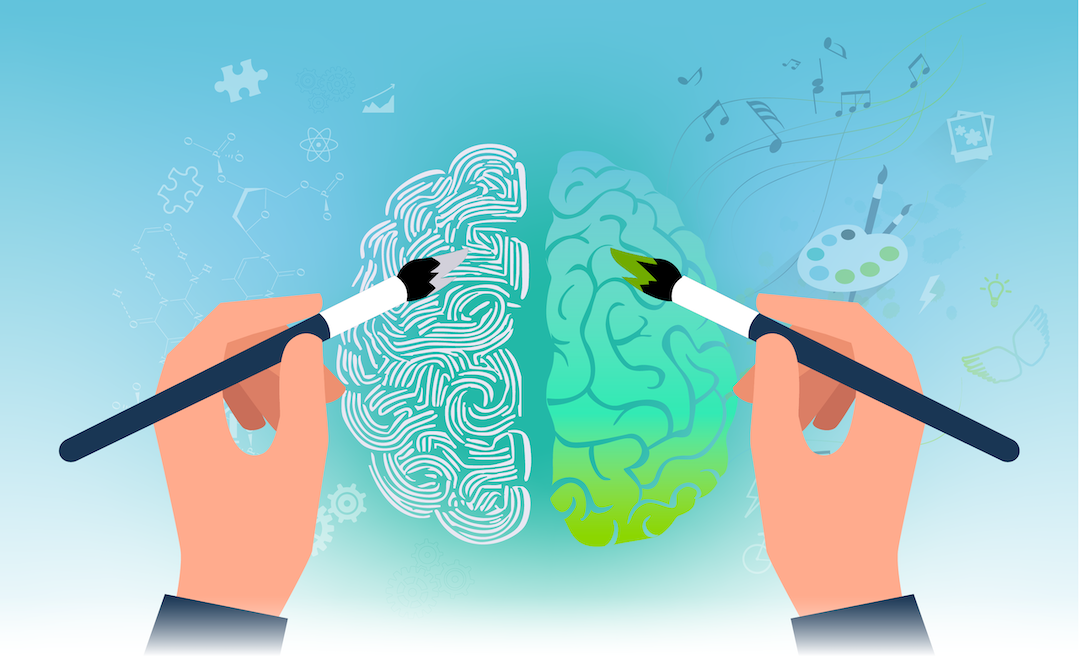
Where does learning truly thrive? Is it under the crushing weight of rigid rules and suffocating structures, or when learners are given the trust and psychological safety they need to flourish?
This is the question at the heart of Carl Rogers’ learning theory. His humanistic take puts you, the individual, smack-bang in the center of the learning adventure.
The goal isn’t to overwhelm you with information, it’s to hand you the keys so you can learn in your own way. As Rogers himself would put it, ‘the only person who is educated is the one who has learned how to learn and change’.
In this article, we’ll unpack Rogers’ core humanist concepts, including self-actualisation, congruence, and unconditional positive regard, and discuss their practical implications for learning professionals.
Ready to trade control for curiousity? Then let’s dive in!
Who is Carl Rogers?
Carl Rogers (1902-1987) was a pioneering American psychologist and one of the founders of humanistic psychology. He’s perhaps best known for developing person-centered therapy (aka. client-centered therapy), an approach that prioritises the client’s autonomy, self-direction, and personal growth.
Born and raised in the Midwest, Rogers’ initial academic pursuits were in agriculture and then religion before he found his true calling in psychology. And thank goodness he did!
His groundbreaking work, Counseling and Psychotherapy (1942), introduced revolutionary ideas on non-directive therapy and unconditional positive regard, concepts that challenged the dominant behavioral approaches of the time. He further solidified his impact with books like Client-Centered Therapy (1951) and the widely read On Becoming a Person (1961).
Words can’t fully capture his influence, but here’s the highlights reel:
- He was the first recipient of the APA’s Distinguished Professional Contribution Award.
- He has been named the most influential psychotherapist in history (even surpassing Sigmund Freud).
- And he’s a Nobel Peace Prize nominee for his work on conflict resolution.
Not too shabby, right? Rogers’ ideas remain essential in psychology, education, and counselling today. So, now that we’ve set the stage, let’s dive into his theory of learning and personal growth.
Understanding Rogers’ Learning Theory
During his long and storied career, Carl Rogers authored as many as 16 books, conducted countless studies, and developed a comprehensive theoretical framework that encompasses at least 19 core principles. This isn’t the kind of work you can neatly summarise.
Instead of getting lost in the weeds, we’ll be focusing on our sweet spot: the world of learning and development. Lucky for us, this is where his ideas truly shine, offering a roadmap for growth that’s as relevant today as it was decades ago.
But to truly grasp Rogers’ genius, we need to start with a clear foundation. With this in mind, we’ll kick things off with an overview of his humanistic psychology and its core principles.
The Framework: Humanism
Humanistic psychology burst onto the scene in the 1950s as the rebellious ‘third force’, challenging Freud’s negative instincts and Skinner’s mechanical conditioning. This wasn’t just another theory, it was a full-blown human revolution in psychology.
It did this by resetting the pecking order. Humanism states that humans aren’t lab rats to be conditioned or bundles of primal urges. They’re gloriously complex, ever-growing, and meaning-seeking individuals. As a result:
- Every person has inherent worth (with no exceptions)
- Subjective experiences matter (as much as observable behaviours)
- Free will isn’t an illusion (it’s humanity’s superpower)
- Growth isn’t just possible (it’s necessary)
- Both our thoughts and feelings matter (they make us fully human)
Of course, a seismic shift like this was always going to have an impact outside of therapy sessions. Indeed, we’ve got a whole deep dive on humanistic learning for you to explore. But for now, let’s continue to focus on Carl Roger’s game-changing contributions.
The Goal: Self-Actualisation
Humanistic psychology stands on this bedrock: our innate drive toward self-actualisation. Abraham Maslow placed this drive at the pinnacle of his famous hierarchy with good reason — it represents our ultimate psychological need.
Self-actualisation is the inherent tendency within each individual to move towards growth, fulfilment, and the realisation of their full potential. It’s our drive to become all we can be. Just as an acorn naturally strives to become an oak tree, humans carry an unstoppable urge to unfold into our fullest selves.

Roger’s approach to self-actualisation is similar to Maslow’s, although instead of a needs-hierarchy, he charts growth as an organic process. This is reliant on satisfying three core conditions: congruence, unconditional positive regard, and empathy.

1. Congruence
At its core, congruence refers to the state of being genuine, authentic, and whole. This state occurs when a person’s real self (who they truly are) and ideal self (who they aspire to be) are in perfect harmony.
As such, there should be no significant gap between how we see ourselves and how we feel and act. Of course, congruence isn’t an on/off switch. Instead, we all exist somewhere along this dynamic spectrum:
- Incongruence: These individuals are vastly different from their ideal self. For example, the ‘always calm’ colleague who snaps at minor mistakes.
- Moving Towards Congruence: Individuals in this state are aware of the gaps between their real and ideal selves and are actively working to bridge them.
- High Congruence: This is the authenticity zone. It represents a state of meaningful alignment between a person’s real self and their ideal self.
The journey toward greater congruence also serves as a crucial pathway to self-actualisation. After all, by working on our inner alignment, we remove the internal barriers that can impede our natural drive towards growth and personal development.

2. Unconditional Positive Regard
Rogers called unconditional positive regard (UPR) ‘the primary theme of my whole professional life’ with good reason. While it’s a bit of a mouthful, this radical concept flips the script on how we relate to each other.
Unconditional positive regard refers to the fundamental acceptance and support of a person, regardless of what they say or do. It’s about valuing the individual in their entirety, without judgement or conditions. For example:
| Conditional Positive Regard | Unconditional Positive Regard |
| “I value you when you perform well” | “I value you because you’re you” |
| ➺ Praise is reward for meeting standards | ➺ Support exists regardless of mistakes |
| ➺ Creates anxiety and a resistant mindset | ➺ Drives risk-taking and growth |
Think about it. Children test boundaries at home precisely because they sense unconditional love — it’s their safe space for experimentation. Likewise, think about the last time you took a major risk. Did you feel secure enough to potentially fail?
When we bake UPR into our learning programmes and environments, we create a sanctuary where learners feel inherently valued. This not only dissolves ego-driven barriers to learning but also significantly boosts their openness to growth.

3. Empathy
For Rogers, empathy isn’t about pity or sympathy. It’s our ability to see the world from our learners’ perspective. In other words, we should feel with them, not for them. Indeed, when learners feel understood, they are more likely to open up, embrace challenges, and actively engage with their learning.
Empathy works hand-in-hand with unconditional positive regard. After all, truly grasping someone’s perspective often means setting your own judgements aside and accepting them fully for who they are.
This is why effective instructors and facilitators actively listen beyond the surface level of words, tuning into the emotions and underlying meanings of what’s been said. Creating truly human-centred learning experiences hinges on ensuring your learners feel heard and understood.
Psst. Empathy is one of many key soft skills. Head here for the whole list.
The Approach: Experiential Learning

So, there we have it — Rogers’ three key pillars of growth.
- Congruence: Your compass for authentic growth.
- Unconditional Positive Regard: The safety net that lets you soar.
- Empathy: The support we need to feel seen.
With these conditions satisfied, the environment is ripe for nurturing authentic progress. And in this context, Rogers passionately advocated for experiential learning as an effective approach for empowering individuals to reach their full potential.
For Rogers, this type of ‘hands-on’ learning was a world apart from what he called ‘cognitive learning’ — that dry process of memorising facts that don’t connect with you personally. Instead, he identified the following defining attributes of effective experiential learning:
- Personal Involvement: Experiential learning demands full immersion. It should engage the whole person, including their emotions, intellect, and what drives them. It should never feel like a detached, purely academic exercise.
- Self-Initiated: Learning should be fuelled by the individual’s drive to explore and understand something that matters to them. While the spark might come from outside, the fire must come from within.
- Learner Evaluated: What truly matters isn’t just external grades or scores, but the learner’s own internal assessment of their journey. They should feel the impact and personal significance of what they’ve learned.
- Pervasive Effects: Real experiential learning doesn’t just inform, it transforms! As such, it should lead to changes in behaviour, attitudes, and even the personality of your learners.
- Personal Growth: This growth should also be linked to our self-actualising tendency. When learning resonates this deeply and captivates our interest, it speaks directly to our desire to evolve and become more fully ourselves.
This humanistic approach to experiential learning contrasts neatly with other like-minded theories. Take, for example, John Dewey’s focus on social engagement and David Kolb’s experiential cycles. In all three cases, however, direct experience is the key to meaningful learning.
The Facilitator: A New Focus
So, what does this mean for us, the learning professionals of the world? Well, in Rogers’ learner-centred paradigm, our job descriptions receive a radical rewrite.
Unlike traditional approaches, where authority rests with the teacher, Rodger’s humanistic worldview places the learner firmly in the driver’s seat. In this model, individuals take the lead in determining what they learn, how they learn, and the resources they use.
Consequently, our role transforms to that of a guide and supporter. We should seek to cultivate an experiential learning environment that empowers learners to take ownership of their learning journey. This would see the focus shift from teaching to facilitating.
As Rogers himself puts it, ‘A person cannot teach another person directly; a person can only facilitate another’s learning’. In the following section, we’ll explore some practical tips for embodying this facilitative approach.
How to Implement Carl Rogers’ Learning Theory
Ready to bring Carl Rogers’ powerful ideas into your learning practice? Shifting to a human-centred approach might be a big change, but it can also generate big results. With this in mind, here are some tips to get you started!
- Safety First: For your learners to perform at their best, you need to offer them unconditional positive regard. Focus on building learning environments that radiate authentic enthusiasm and embrace a diversity of opinions. Likewise, avoid using judgemental language or unnecessarily pitting your learners against each other.
- Practice Empathy: When your learners feel deeply understood, their cognitive defenses lower and real growth begins. Actively listen to understand their feelings, perspectives, and needs. Reflect back your understanding (‘What I’m hearing is…’) to ensure your audience feels heard.
- Learner Freedom: Where possible, offer learners choices in what they learn, how they learn, and how they demonstrate their understanding. This allows them to organically seek out and connect with material that holds personal meaning. Your role? Guide their goal-setting and champion their initiative.
- Experiential Options: Design activities that involve hands-on learning, problem solving, discussions, and real-world application. Ensure these experiences are clearly linked to learners’ lives, interests, and goals. Relevance like this helps to fuel meaningful engagement and deeper learning impact.
- Holistic Learning: Humanists place equal importance on cognitive and emotional domains. As such, you should attend to the psychological and motivational aspects of learning with the same dedication you apply to developing hard skills. Strive to create training programmes that connect with both heart and mind.
- Self-Evaluation: While formal assessments and quizzes will still likely play a role, you should also encourage your learners to track their own growth. Game mechanics like experience points, levels, and leaderboards can promote target-setting. Why not also ask your learners to think about what they’ve learned and how it impacts them?
The Benefits of Rogers’ Approach

Rogers’ learning theory offers significant advantages for both learners and facilitators. At its core, its learner-centered nature empowers individuals to take control of their education, naturally cultivating intrinsic motivation and a sense of ownership.
What’s more, when learning connects on a personal and emotional level, it becomes more meaningful and, consequently, more likely to stick. Research into experiential learning (see here) and holistic humanist approaches (see here) underline this.
But the Rogerian approach goes deeper, particularly in promoting psychological safety. By offering unconditional positive regard, we help learners to feel inherently valued, thereby boosting their self-confidence and encouraging them to take risks. Compelling research supports this:
- A 2021 study highlights how ‘humble leadership’ and psychological safety improved knowledge sharing among teachers across 537 Chinese schools.
- A 2024 study found that psychological safety is an effective catalyst for ‘learning, knowledge sharing, exploration, and change’.
- And this 2025 study of 72 teams demonstrated that psychological safety contributes to enhanced learning behaviours.
For facilitators, embracing this approach cultivates deeper connections with learners, built on a foundation of trust and understanding. These relationships can be profoundly rewarding. After all, who doesn’t want to see their learners self-actualise?
The Limitations of Rogers’ Approach
Of course, as with any learning theory, there are limitations to Rogers’ approach. Firstly, we should acknowledge that it’s not easy to pull off. Creating a truly learner-centred environment with ample choice, personalised support, and experiential activities is a mammoth task.
What’s more, your learners might not be ready to embrace such a high degree of autonomy. Some may prefer more structure and guidance, especially initially. Rogers’ faith in human self-direction and our innate goodness may be somewhat idealistic.
In truth, the effectiveness of this sort of learning approach will vary depending on the subject matter, your learning objectives, and your organisational context. You’ll also need top notch facilitators skilled in both empathy and congruence.
Finally, we should note that the concept of unconditional positive regard is not without its critics. For a start, it’s never been empirically validated. Healthy learning setups typically require both compassion and clear boundaries. Without this, we risk creating permissive environments that steer clear of necessary growth challenges.
In short, Rogers’ well intentioned learning approach requires careful consideration, bucketloads of self-awareness, and an understanding of the potential pitfalls. It’s more likely to reach its full potential not in isolation, but as part of a balanced learning ecosystem.
Final Words
So, there we have it. According to Carl Rogers, learners aren’t just empty vessels. They’re individuals with an inherent drive to grow. That’s why genuine human connection lies at the heart of every effective learning experience.
By embracing principles like congruence, empathy, and unconditional positive regard, we cultivate the vital psychological safety that allows our learners to flourish. In essence, we’re clearing away the mental obstacles that can hinder their journey towards self-actualisation.
Admittedly, shifting to this learner-centric approach demands courage. It will require a change in mindset for both learning professionals and learners alike. However, the reward is an environment where continuous learning and knowledge sharing can truly thrive.
Up for the challenge? Then it’s time to go forth and facilitate!
Thanks for reading. If you’ve enjoyed this content, please connect with me here or find more articles here.
Carl Roger’s learning theory is just one piece of the learning puzzle. Explore all the essential frameworks with our new guidebook, ‘The Learning Theories & Models You Need to Know’. Your complete overview awaits!









